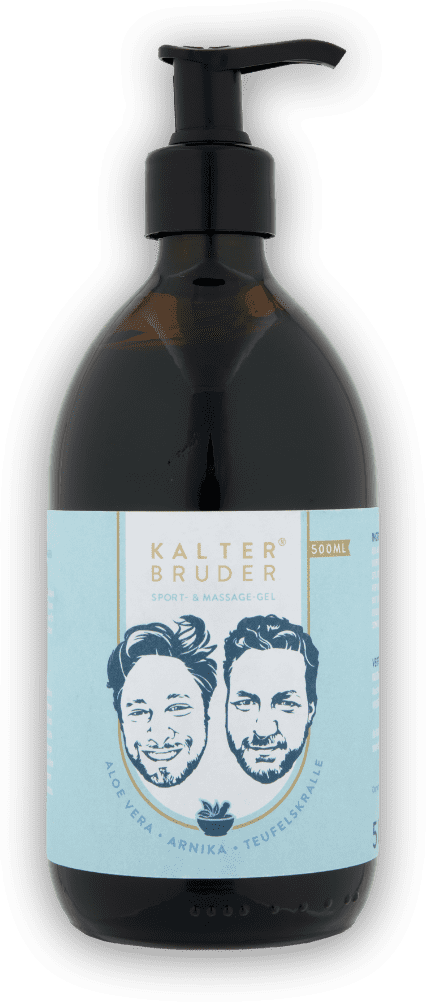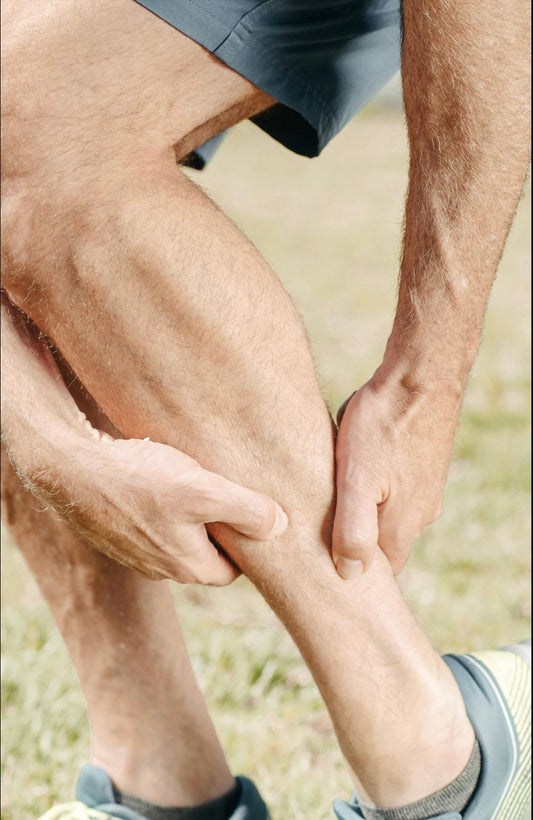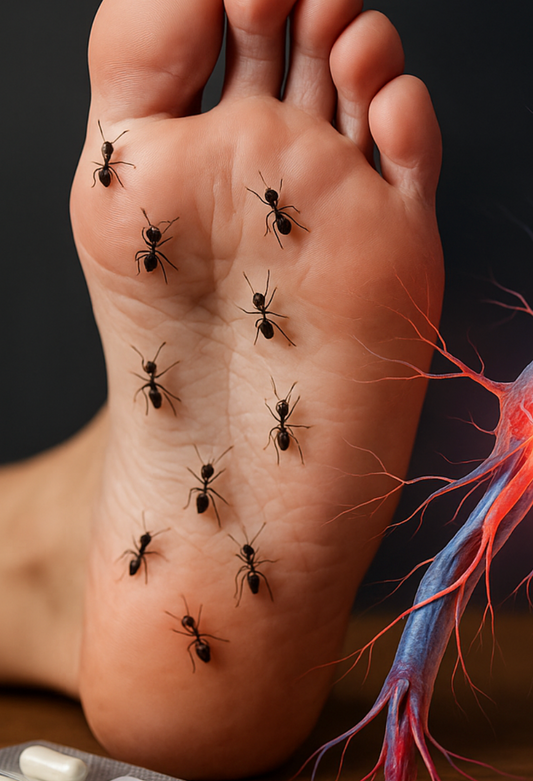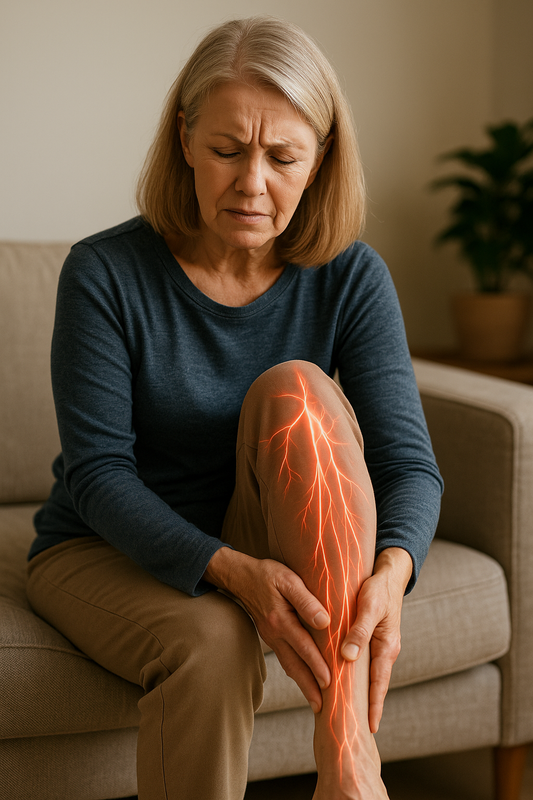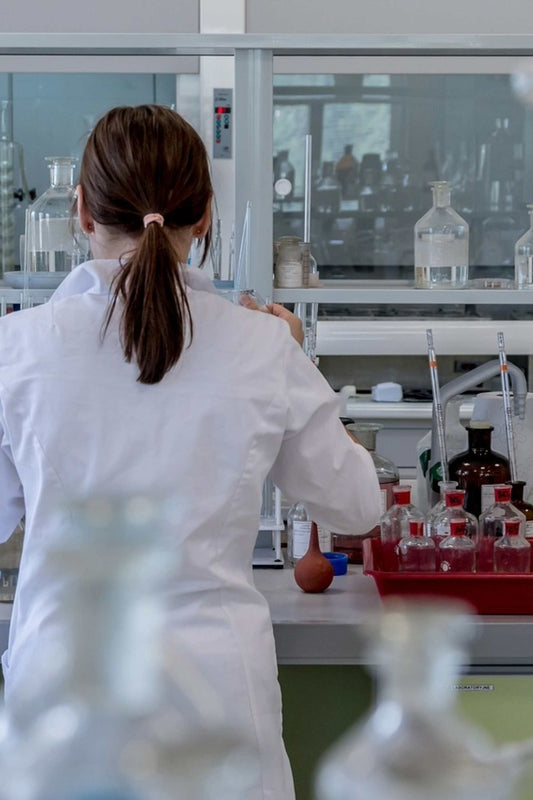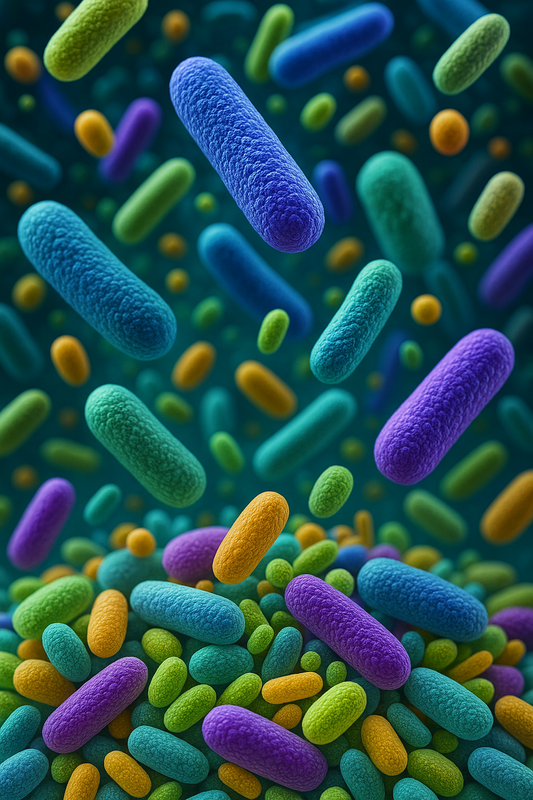Useful and easy-to-implement tips for a plastic-free lifestyle
A few weeks ago we wrote about microplastics in our drinking water (you can find the article further down in the magazine) - now we want to look at where most of the plastic actually comes from in everyday life and what we can do to significantly reduce our own consumption. Because one thing is clear: plastic is not only extremely bad for our planet but also for your own health - now every one of us has it in the form of microplastics in our bloodstream and this has dramatic consequences, as we will also see in this article.
plastic everywhere
It is in our packaging, our products and ultimately in our bodies. Since the 1950s, the world has produced over 8.3 billion tons of plastic . Of this, around 8 million tons end up in the oceans every year, where they endanger not only marine life but also us humans. Plastic does not simply disappear. It slowly decomposes and remains in our environment for centuries. This problem has now become so big that microplastics have already been detected in the Arctic ice, in our food and in the air.
Let's first look at exactly where plastic is generated in our everyday lives. You'll be surprised how quickly it adds up:
1. Packaging: From the plastic wrap around your cucumber to the packaging of your favorite cookies - the majority of plastic waste comes from packaging. According to the Federal Environment Agency, around 6 million tons of packaging waste are generated in Germany every year, and the trend is rising.
2. Plastic bottles and cups: Whether it's a water bottle on the go or a coffee to go in a plastic cup - around a million plastic bottles are bought and thrown away every minute worldwide. This not only means an immense amount of waste, but also an enormous consumption of resources during production.
3. Kitchen and household items: cutting boards, spoons, dishwashing brushes – all of these are often only available in plastic. And don't forget the plastic containers in which you store your food.
4. Hygiene and cosmetic products: Many shower gels, shampoos and toothpastes contain microplastics. Cotton buds, razors and toothbrushes are also often made of plastic.
5. Clothing: Surprise? In fact, most of our clothing is made of synthetic fibers such as polyester, nylon or acrylic. When washed, tiny plastic fibers are released and end up in the wastewater as microplastics.
Why plastic is so harmful to health
But why is plastic so dangerous for your health? The problem lies primarily in the ingredients. Many plastics contain plasticizers such as phthalates or bisphenol A (BPA), which can have a negative impact on hormone levels. These substances are endocrine-disrupting chemicals that can increase the risk of diabetes, cardiovascular disease, and even certain types of cancer, especially in older people. Studies have shown that BPA, a commonly used plasticizer in plastic bottles and cans, can penetrate the body and act like a hormone, leading to an increased risk of obesity, heart disease, and fertility problems (Harvard School of Public Health, 2016).
The invisible danger: microplastics in your body
Microplastics have long since arrived in our bloodstream. Researchers have detected tiny plastic particles in the blood, lungs and even the intestinal tract. A 2022 study by the Dutch Rijksinstituut voor Volksgezondheid en Milieu (RIVM) showed that 80% of the people examined had microplastic particles in their blood. The health effects are not yet fully understood, but it is suspected that these particles can cause inflammation, cell damage and possibly even cancer. Some researchers see infertility and Alzheimer's as two of the biggest health threats that could be linked to microplastics.
According to a study by the WWF, the average person ingests around 5 grams of microplastics every week - the equivalent of the weight of a credit card. Extrapolated over a year, that's 250 grams, or about the weight of a large apple. Microplastics enter our bodies through the air, our drinking water and our food without us noticing. It has already been detected in the placenta, human blood and even the lungs. With the enormous increase in plastic production and inadequate waste disposal, microplastic pollution has increased dramatically in recent decades. If plastic production is twice as high as today by 2050, as predicted, the microplastic pollution could also increase further. Evidence suggests that microplastics can lead to inflammation, cell damage and impaired immune systems. Of particular concern is that they can bind toxic chemicals that are potentially carcinogenic and could cause hormonal disruption.
Nanoplastics – The Even Smaller Danger
In addition to microplastics, nanoplastics are also a growing threat. These particles are even smaller than microplastics and can easily penetrate cells and organs. Due to their tiny size, they can overcome biological barriers that microplastics cannot pass through, such as the blood-brain barrier. Initial studies suggest that nanoplastics can disrupt cell function and increase the risk of neurological disorders, such as Alzheimer's. In addition, similar to microplastics, they can transport toxic substances that can cause inflammation and other health problems. Because nanoplastics are so tiny, they are even harder to detect and control, which further increases the challenge of dealing with plastic pollution.
What we can do to get rid of plastic
Admittedly, it is not easy - the problem of microplastics in particular is global and difficult to control. Some countries are taking initial steps to tackle the problem - the EU, for example, is planning to ban plastic packaging from supermarket shelves. There are also technologies, such as special washing machine filters from Miele, that filter microplastics out of clothing. But microplastics that enter our bodies via groundwater, food or even the air remain a major problem.
But the situation is not without alternatives, because the greatest damage to health is caused by the plastic directly around you. There is a lot you can do to at least greatly limit the influence of plasticizers, micro- or nanoplastics.
1. When shopping
Fruit and vegetables in plastic bags, shrink-wrapped food or drinks in plastic bottles - we come across plastic in abundance every time we go shopping. In fact, 227.5 kg of packaging waste is generated per person in Germany every year, and around 91 kg of this is plastic packaging. But there are many ways to reduce plastic consumption when shopping. One of the simplest methods is to do without plastic bags. Germany has already made good progress, with only 10 plastic bags per person per year compared to 90 in some other countries. But this number can also be reduced further by switching to reusable fabric bags or shopping nets.
It is even more effective to look for plastic-free packaging or to shop in unpackaged stores. These supermarkets are becoming increasingly popular and offer a wide range of unpackaged food. Those who shop there regularly can reduce a household's plastic consumption by up to 30 kg per year. In addition, buying loose products is often even cheaper because you only buy the quantities you actually need, which also counteracts food waste. Alternatively, you can ask for unpackaged products at the weekly market or organic food store, as more and more retailers are offering these options.
Personal tip: We have been buying all sorts of things in glass jars for years, such as yogurt and tomato sauce, and have also acquired a few “lunch boxes”. We then take these to the organic market and have everything from the cheese, sausage and antipasti counter filled for us – every vendor at the weekly market will do this too. Dates, olives and cream cheese from the Turkish shop always end up in a rinsed glass jar.
2. When drinking
Plastic bottles are one of the biggest sources of plastic waste in everyday life. 17 billion plastic bottles are sold every year in Germany alone, even though 65% of Germans regularly drink tap water. This means that a significant proportion of the population still relies on single-use plastic, which could easily be avoided. An easy way to drastically reduce your plastic consumption is to switch to reusable bottles or drink tap water. Reusable bottles made of glass or stainless steel are durable, can be reused countless times and thus help reduce plastic waste.
Switching to tap water is not only environmentally friendly, but also makes economic and health sense. Tap water in Germany is one of the most strictly controlled foods and is generally of excellent quality. Those who switch from bottled water to tap water can save up to 150 plastic bottles a year, which not only reduces plastic waste, but also reduces CO₂ emissions by 82 kg per person. In terms of cost, tap water is unbeatably cheap: a liter of tap water costs just a few cents in Germany, while mineral water in plastic bottles often costs 100 times as much. If you want to learn more about the benefits of tap water, read our detailed article on drinking water , which delves deep into this topic.
Opinion: I (Carsten) find a company from Rinteln to be really bad. Its product, "thirst quencher" in a plastic box, is currently being extremely popular with young people and is lying around in parking lots everywhere. I will probably never understand why the generation that should be most concerned about the well-being of our environment is treating it so thoughtlessly.
3. Plastic-free in kitchen & bathroom
Our kitchens are often one of the biggest sources of plastic waste in the home, mainly from packaging and single-use products like cling film. One simple but effective way to reduce plastic in the kitchen is to switch to beeswax wraps . These reusable cloths are an eco-friendly alternative to cling film and can withstand up to 300 uses before needing to be replaced. By making this switch, a family can save up to 12 rolls of cling film a year. Beeswax wraps are perfect for covering bowls or wrapping food, and they're also breathable, which can extend the shelf life of fruit and vegetables.
There are also numerous ways to reduce plastic in the bathroom. Every year , 18,000 tons of microplastics enter the environment through cosmetic products alone. Plastic-free alternatives such as solid shampoos, soaps or toothpaste tabs are not only more environmentally friendly, but also more economical. A solid shampoo, for example, lasts as long as two to three bottles of liquid shampoo, and toothpaste tabs also come without plastic packaging. This also avoids the ingestion of microplastics, which are contained in many conventional care products and can harm both the environment and health.
4. The fashion problem
The fashion industry is a major contributor to global plastic pollution. Synthetic fibers such as polyester, nylon or acrylic are used in many garments, but every wash releases tiny microplastic particles that enter the environment through wastewater. It is estimated that 35% of microplastics in the oceans come from synthetic textiles. A single load of laundry can release up to 700,000 microplastic particles that are so small that they pass through sewage treatment plants and eventually end up in rivers and seas.
A more environmentally friendly alternative is to buy clothes made from natural fibers such as cotton, linen or hemp. These materials are biodegradable and do not cause microplastic pollution when washed. They are also often more comfortable to wear and less stressful on the skin. By switching to clothes made from natural fibers, you can reduce your household's microplastic emissions by up to 80% . Sustainable fashion brands that use plastic-free materials are also a good choice to reduce the environmental impact of the fashion industry.
Technological Innovations Against Plastic – The Future is in Our Hands
Although plastic is omnipresent in many areas of daily life, there are also technological innovations that can help to drastically reduce plastic consumption. Scientists around the world are working on new materials that can replace conventional plastic. Packaging made from algae , fungi or cellulose is biodegradable, compostable and could play an important role in reducing plastic waste in the future. Some of these alternatives are already ready for the market and could be used more frequently in the coming years.
The development of recyclable plastics is also progressing. These materials can be returned to the production cycle without having to use new raw materials. Combined with stricter recycling guidelines, this could help to significantly reduce the amount of plastic waste. In addition, some companies are working on technologies that can convert existing plastic waste into energy or new products. In the coming decades, these innovations, combined with more conscious consumer behavior, could lead to a drastic reduction in global plastic pollution.
Take action together – fight plastic waste together
Individual measures are important, but together we can achieve even more. Every year, 20,000 tons of plastic waste are collected from rivers, beaches and parks worldwide through clean-up campaigns. These campaigns are not only symbolically important, but make a real contribution to reducing plastic in the environment. Such campaigns play an important role in raising awareness among the population, especially in countries with high rates of plastic pollution.
In Germany, there are more and more initiatives and events where people can actively contribute to reducing plastic. In 2021, over 10,000 people took part in garbage collection campaigns as part of "Plastic Free July" or similar campaigns. These campaigns also serve as role models because they show how easy it can be to get active and make a contribution yourself. It is also fun to work with others to ensure a clean environment and to see the effects of your commitment directly.
Conclusion: Every little change counts
Reducing plastic in everyday life may seem like a challenge at first, but it starts with small, conscious decisions. Whether it's avoiding plastic bottles, buying unpackaged food or switching to plastic-free alternatives in the bathroom - all of these measures have a big impact. Overall, a family can reduce its plastic consumption by up to 50% if they consistently use such alternatives.
But the fight against plastic is not only good for the environment. It also protects our health and that of future generations. Every step towards a plastic-free lifestyle counts and helps to make the world a better place.





